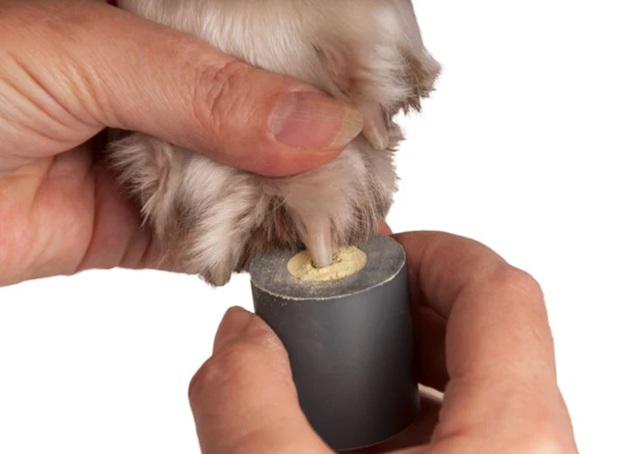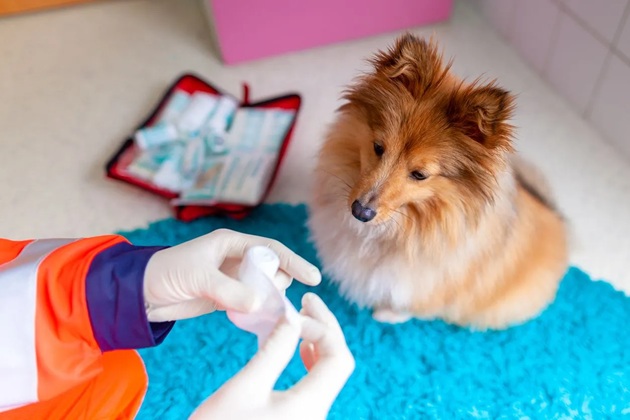Emergency Pet Care: How Stop Bleeding Powders Can Help with Minor Injuries and Grooming Accidents
Every pet owner knows that accidents can happen when you least expect them. Whether it’s a nail trim gone too short, a minor scratch from rough play, or a small wound from exploring the great outdoors, pets are just as prone to minor injuries as humans. Having a well-stocked pet first-aid kit can make all the difference in these moments. One of the most important items to keep on hand is styptic powder, a simple but powerful solution that quickly controls bleeding and helps prevent complications.
Understanding Stop Bleeding Powders for Pets

Styptic powder, also known as stop bleeding powder for animals, is a staple in pet first aid. It’s designed to help control minor bleeding by encouraging rapid clotting. These powders are particularly useful for small cuts, nail trimming accidents, and minor abrasions that don’t require veterinary attention but need quick action to stop blood loss.
How Do These Powders Work?
The key ingredients in most styptic powder options include ferric subsulfate, bentonite, or aluminium sulphate, which work by constricting blood vessels and promoting clot formation. They help form a protective barrier over the wound, reducing the risk of further irritation or infection.
Are Styptic Powders Safe for Pets?
Yes! These powders are formulated specifically for animals, making them safe for use on dogs, cats, birds, and even small mammals like rabbits or guinea pigs. Unlike human alternatives, which may contain ingredients that could be toxic to pets, styptic powders are pet-friendly when used as directed.
Common Injuries That Require Styptic Powder
No matter how careful you are, pets have a knack for getting into trouble. Here are some of the most common minor injuries that can be treated with styptic powder:
1. Nail Trimming Accidents
One of the most frequent causes of bleeding in pets is cutting the nail too short. If you accidentally clip into the quick (the sensitive inner part of the nail), it can cause significant bleeding. Applying powder helps clot the blood quickly and prevents discomfort for your pet.
2. Small Cuts and Scratches
Minor cuts from rough play, scraping against furniture, or outdoor adventures can cause bleeding. If the wound is small and not deep, applying styptic powder can stop the bleeding and allow the healing process to begin.
3. Ear and Tail Tip Injuries
Pets with long ears or wagging tails are especially prone to minor cuts and scrapes in these sensitive areas. Due to high blood circulation, even a small cut can result in significant bleeding. A small dab of powder can help control it before it becomes a bigger issue.
4. Broken Whiskers or Dew Claw Injuries
Dewclaws (the small, thumb-like claws on the front legs of some pets) can easily catch on objects and tear, leading to bleeding. Similarly, broken whiskers can cause minor bleeding and discomfort. Styptic powder helps to control the bleeding and reduce sensitivity in the affected area.
5. Minor Bites or Scrapes from Other Animals
Playful bites or accidental scrapes during social interactions with other pets can sometimes lead to minor bleeding. While serious wounds should always be checked by a vet, stop bleeding powders are great for managing small nicks.
How to React in an Emergency
When an injury occurs, acting fast can make all the difference. Here’s how to properly use the powder to control bleeding:
Step 1: Stay Calm and Comfort Your Pet
Your pet may be frightened or in pain, so keeping a calm and reassuring tone will help ease their anxiety.
Step 2: Assess the Wound
Before applying any treatment, check the severity of the injury. If the wound is deep, large, or continues bleeding after several applications, seek veterinary assistance immediately.
Step 3: Apply Pressure
For minor cuts or nail injuries, use a clean tissue or gauze pad to gently apply pressure to slow the bleeding before using styptic powder.
Step 4: Apply the Powder
- Take a small pinch of the powder and apply it directly to the bleeding area.
- If the injury is a nail, dip the nail tip into a small amount of powder.
- Use a cotton swab or fingertip (wear gloves if possible) to gently press the powder into the wound.
- Apply light pressure for about 10–15 seconds to encourage clotting.
Step 5: Monitor the Bleeding
If bleeding continues, repeat the application. However, if the wound does not stop bleeding after a few attempts, consult your veterinarian.
Step 6: Keep the Area Clean
Once the bleeding has stopped, avoid excessive licking by your pet. You may need to gently clean the surrounding area with pet-safe antiseptic and keep an eye on it for signs of infection.
Other Essential First Aid Kit Items

A well-prepared first-aid kit can be a lifesaver. In addition to styptic powder, consider including the following items in your pet’s emergency kit:
- Antiseptic wipes or spray: To clean wounds and prevent infection.
- Gauze pads and bandages: For covering wounds and preventing further irritation.
- Tweezers: Useful for removing splinters, debris, or ticks.
- Pet-safe antibiotic ointment: To help wounds heal without infection.
- Scissors: For cutting bandages or fur around an injury.
- Pet emergency contact list: Keep your vet’s phone number handy.
Conclusion
Minor injuries are an inevitable part of pet ownership, but with the right tools and knowledge, you can handle them confidently. Stop bleeding powder is an essential addition to any pet first-aid kit, helping to quickly and safely manage small cuts, scrapes, and nail-trimming accidents.
By staying prepared and knowing how to use styptic powder correctly, you can provide quick relief to your pet and prevent minor mishaps from turning into major concerns. Remember, if bleeding persists or the wound appears serious, always consult your veterinarian for professional advice.